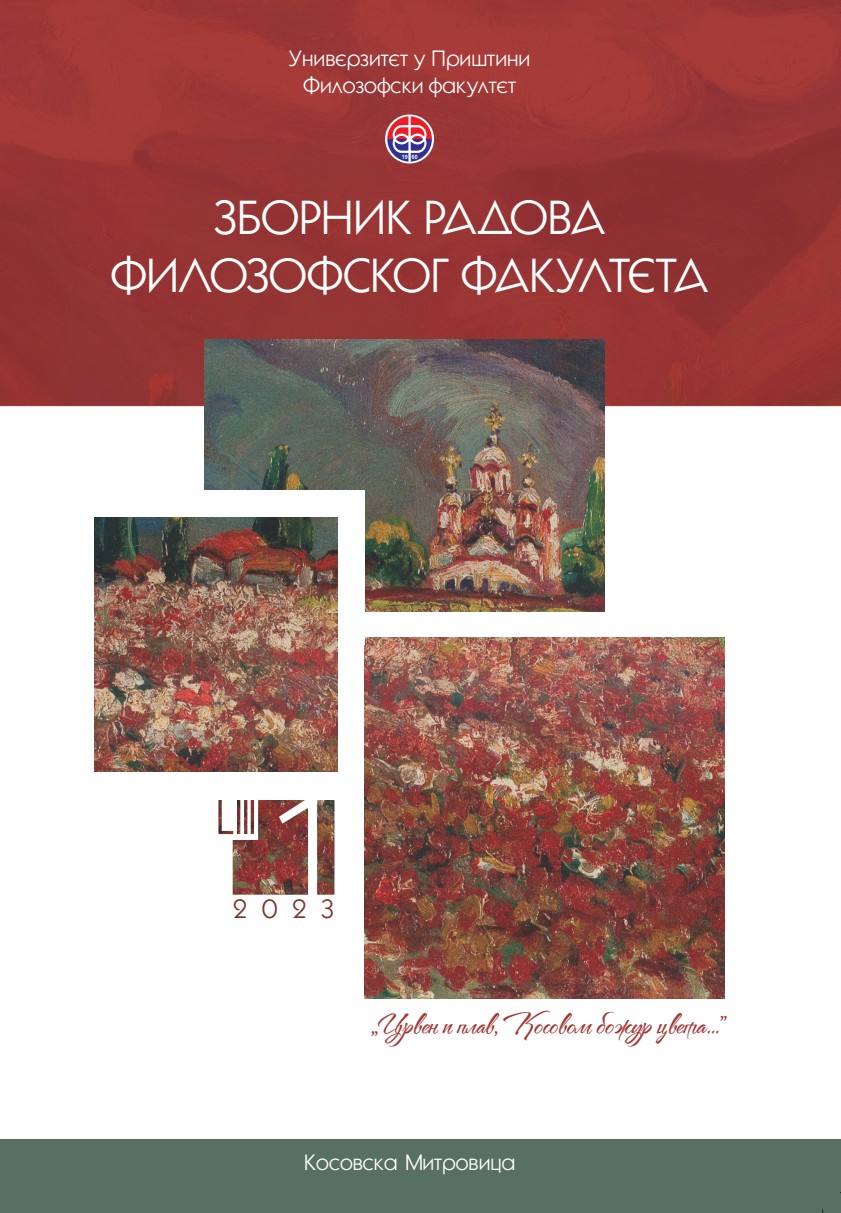О програмском заснивању збирки портрета уметника и њихових дела у XVI веку
On the Programmatic Foundation of the Collections of Artists' Portraits and Their Works in the 16th Century
Author(s): Angelina Milosavljević-AultSubject(s): Fine Arts / Performing Arts, History of Art
Published by: Филозофски факултет, Универзитет у Приштини
Keywords: history of art collections; collections of artists’ portraits; Giorgio Vasari; Paolo Giovio; Accademia del Disegno in Florence.
Summary/Abstract: The origin of the idea to establish art collections in various socio-cultural contexts represents a special topic of the museum history, on one hand, and of the institutionalization of art, on the other. The expressions of the intentions to form certain collections, especially art collections, in order to preserve the memory of the art works and the likeness of their creators still stir the scholarly debates. The creation of art collections as such, and along with them the collections of artists’ portraits and self-portraits, is the result of several trends in the renaissance concept of art. One is the status of liberal arts, which the fine arts, especially painting, gradually assumed since the beginning of 15th century, owing to Leon Battista Alberti’s Treatise on Painting. Another phenomenon that contributed to this process is the formation of the value system of art in the 16th century art theory, with Giorgio Vasari as its main proponent. We would like to point to certain other instances that anticipated the tendency to form art collections. One such instance is the collection of portraits of famous men that Paolo Giovio, the prominent humanist, started to acquire in 1521. Another instance is the room in Giorgio Vasari’s house in Arezzo with the portraits of artists, which he had painted in early 1540s. Yet another is the cycle of graphic representations of artists’ portraits that appeared in the second edition of Vasari’s Lives, in 1568, as mnemonic devices to accompany the literary portraits. Concurrent with the design of the illustrated edition of the Lives were the preparations for the establishment of the Academy of the Arts of Drawing (Accademia del Disegno), founded in 1563, whose Statute introduced the need to form a collection of artists’ portraits and an art collection featuring their works. These were supposed to serve didactic purposes, in the first place, but also to preserve the memory of the artistic forebears. It paved the way for the future academic art collections, such as the Borromeo’s Milan Ambrosiana that was created as an art academy. All these played important roles in the establishment of a visible history that grew into museum that shaped the memory of art and its history, not only by exhibition of the art works, but also by exhibition and preservation of the portraits of their creators. Moreover, they established the practice, the obligation, of artists to leave to their artistic progeny not only their works but also their likeness that became the image and the guarantee of a newly established history, the history of art.
Journal: Зборник радова Филозофског факултета у Приштини
- Issue Year: 53/2023
- Issue No: 1
- Page Range: 309-321
- Page Count: 13
- Language: Serbian

